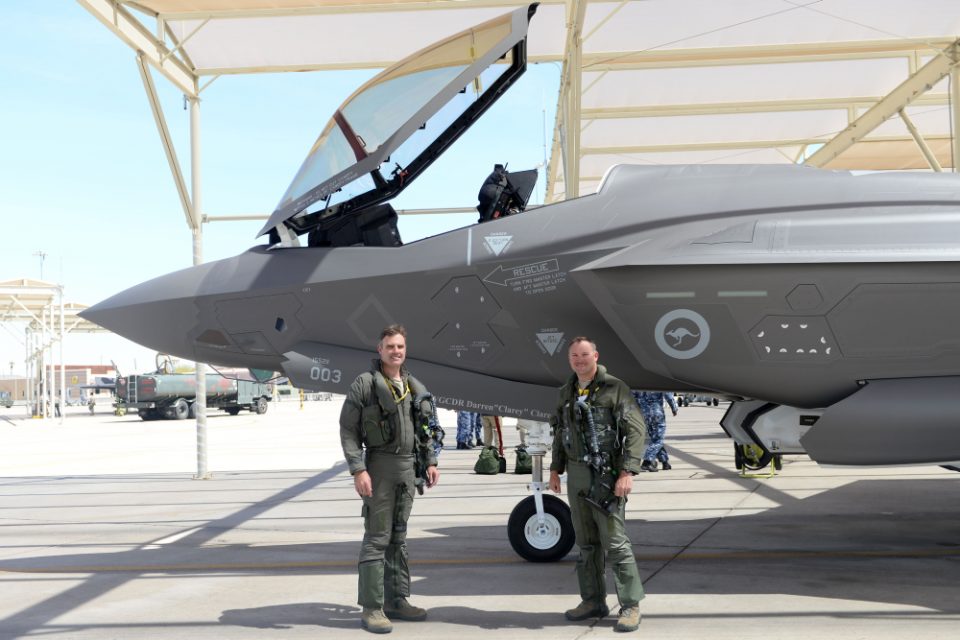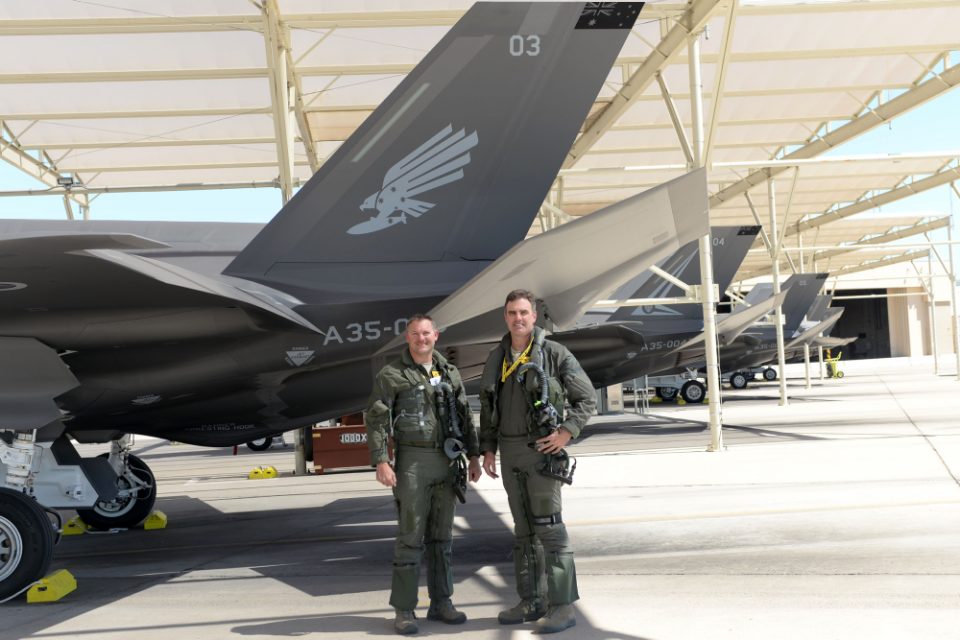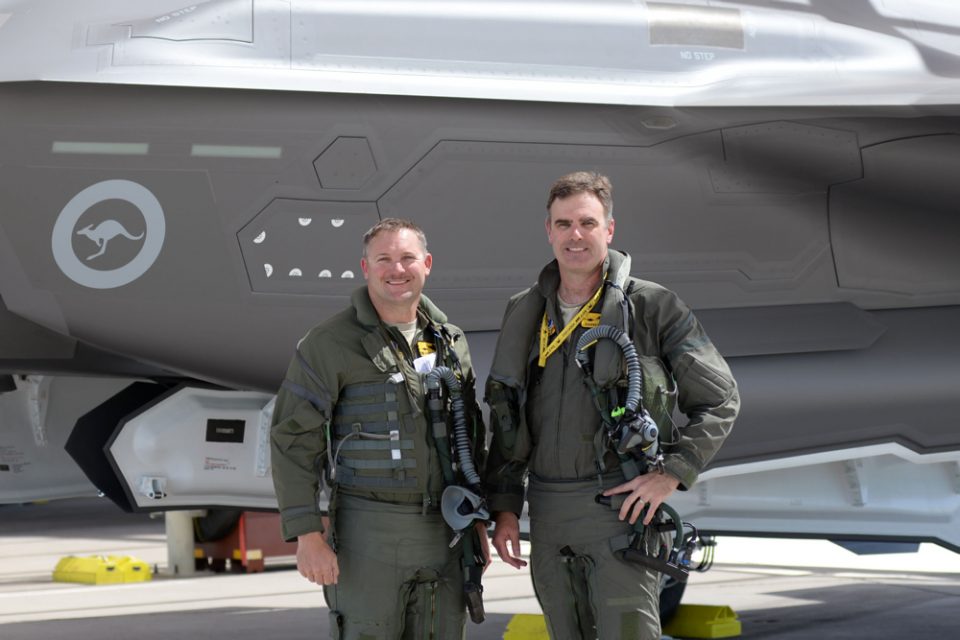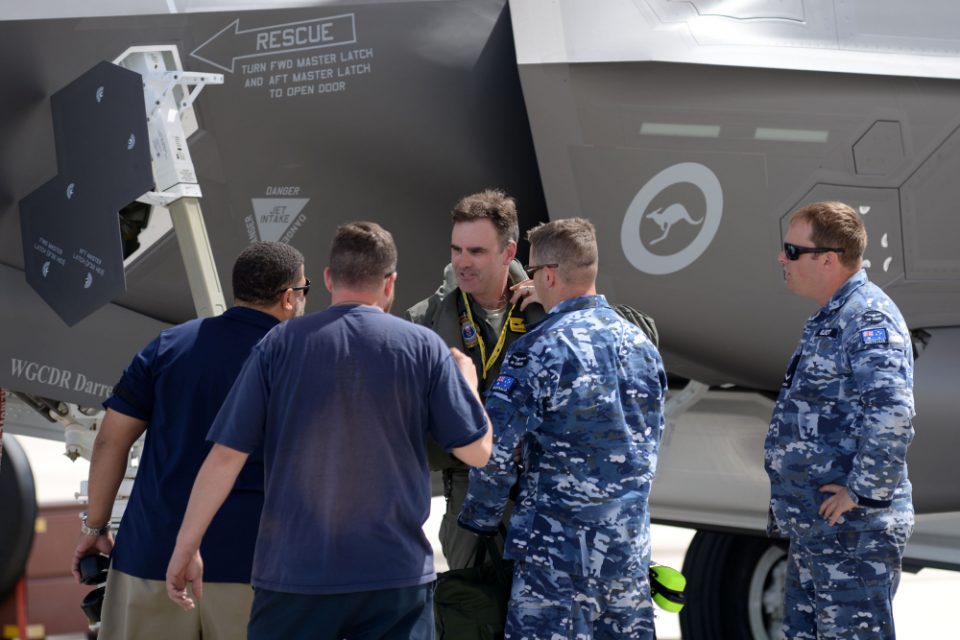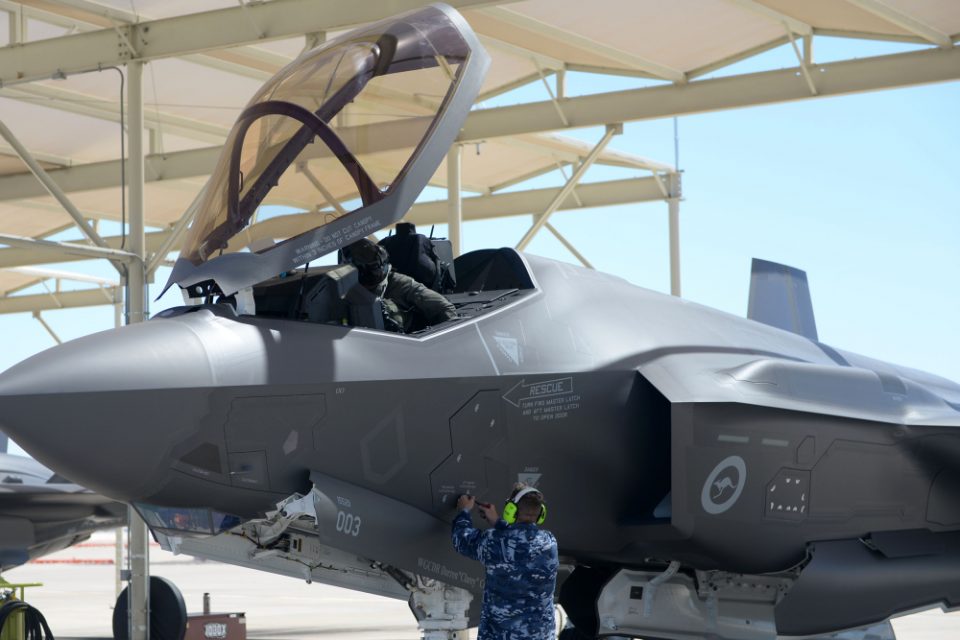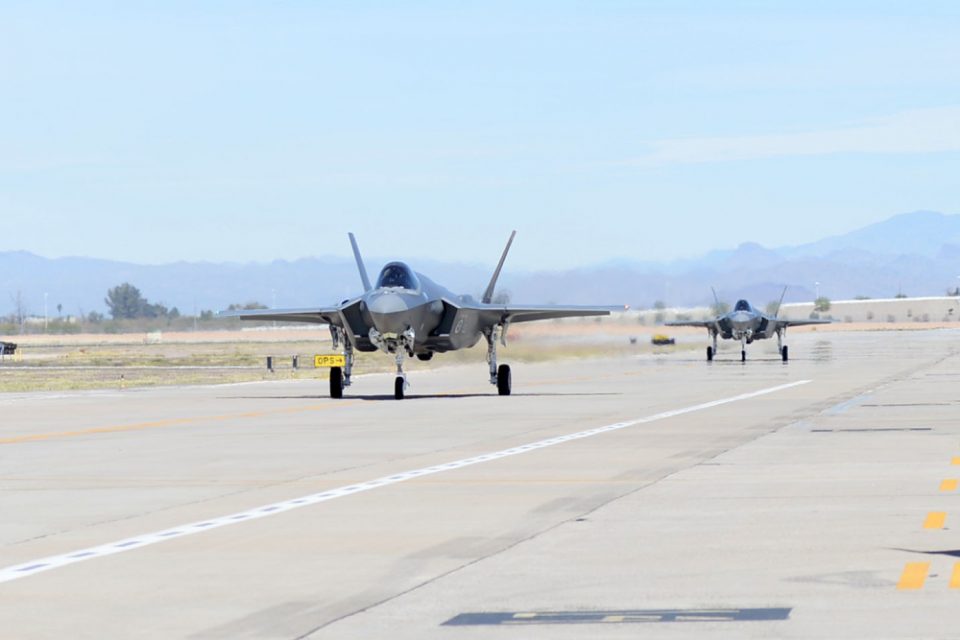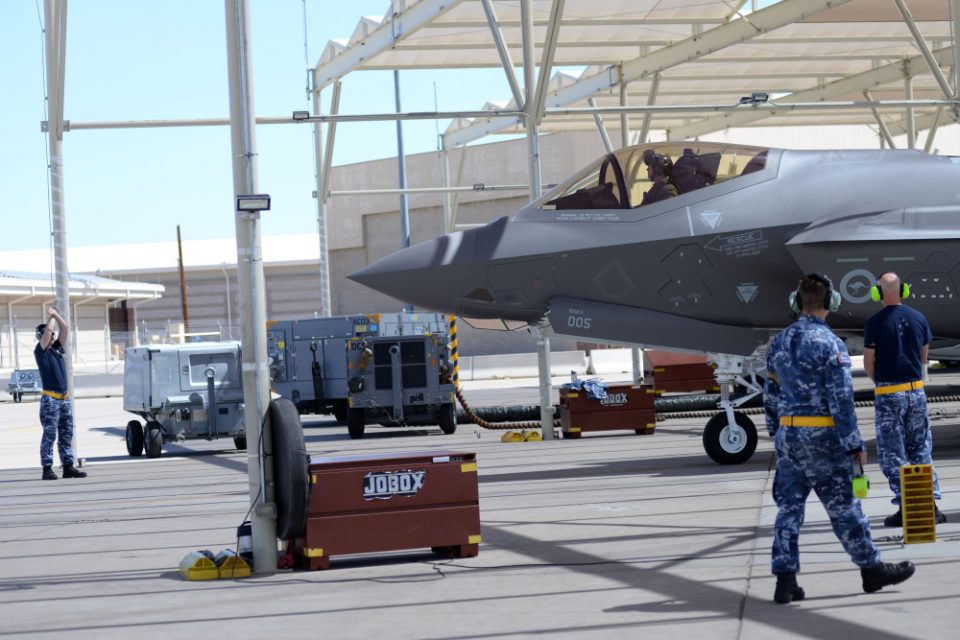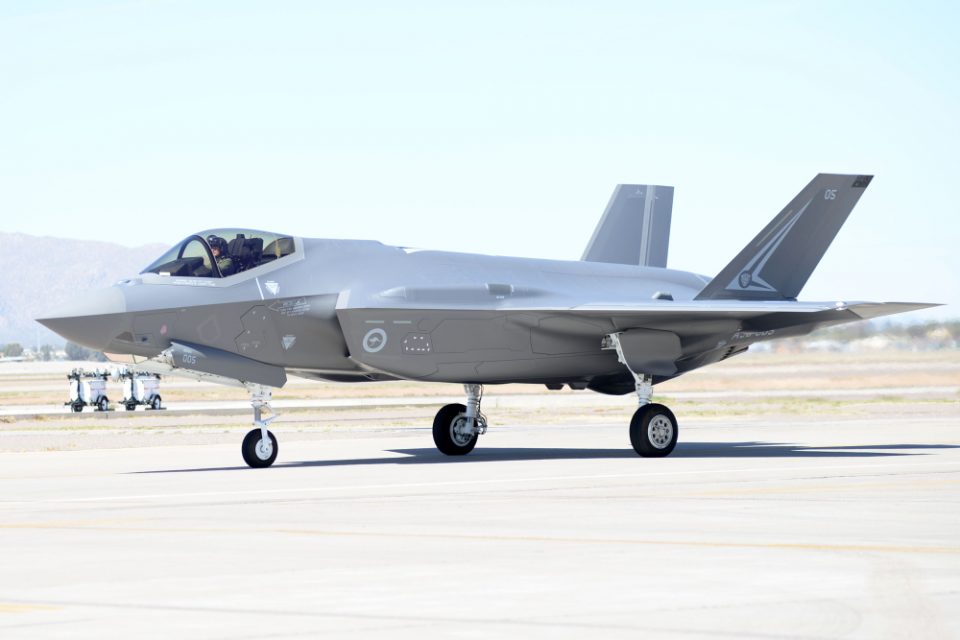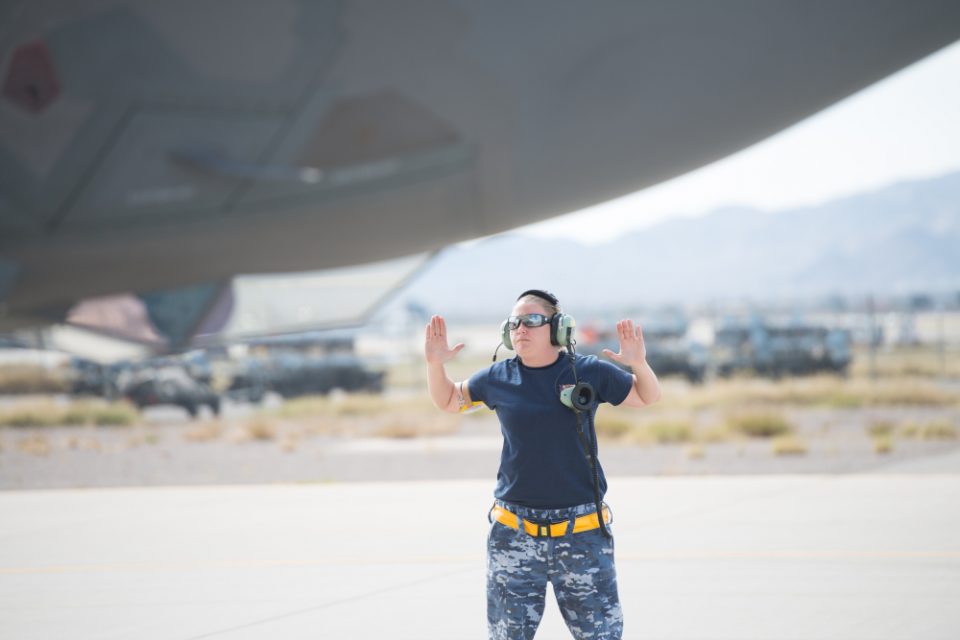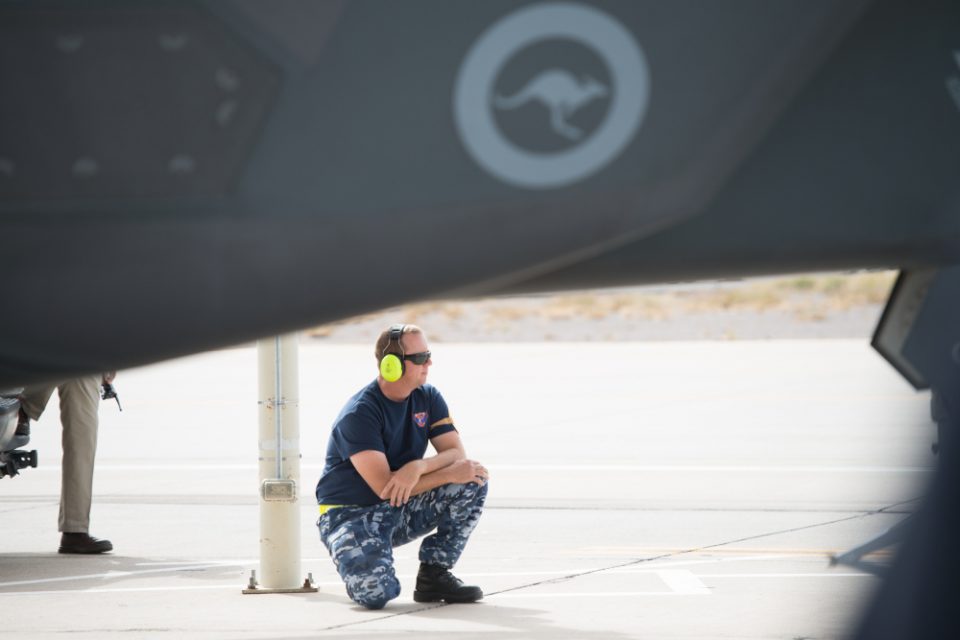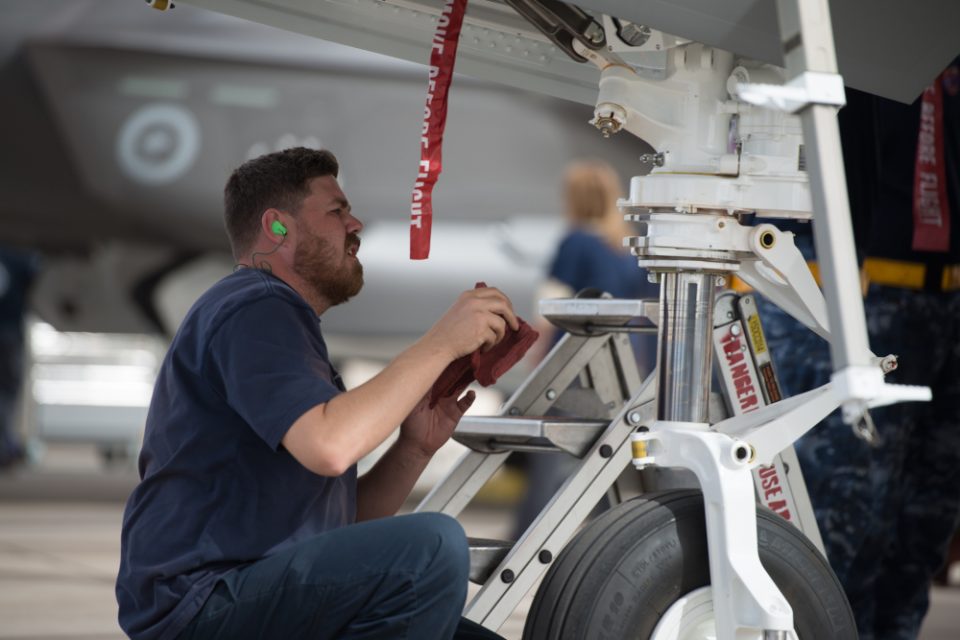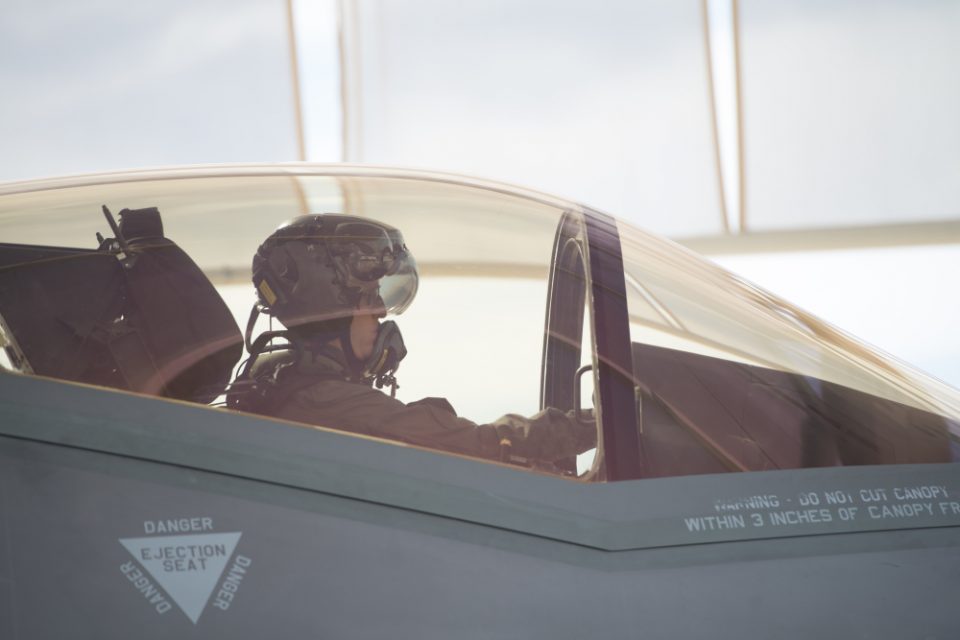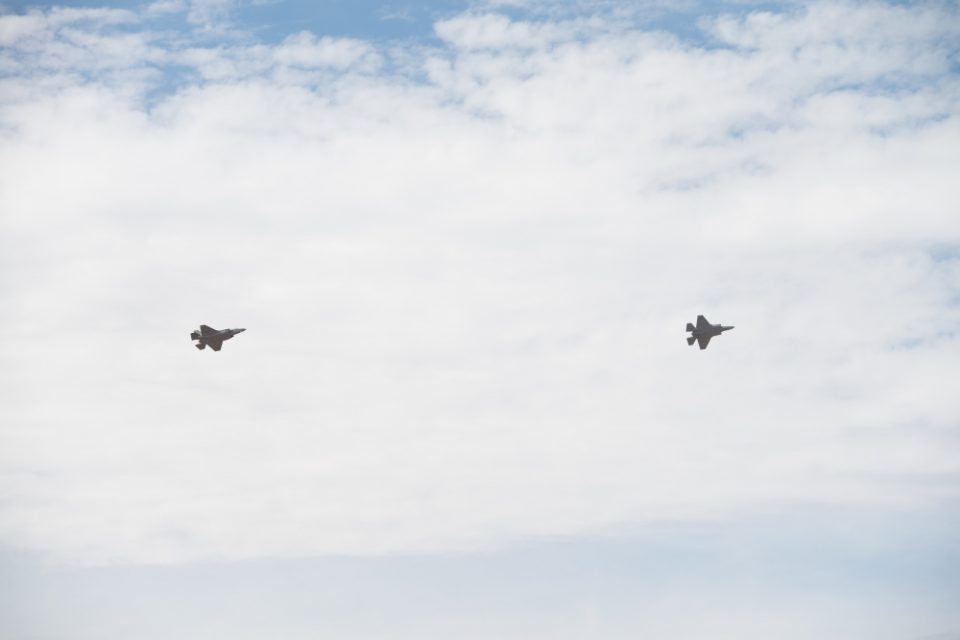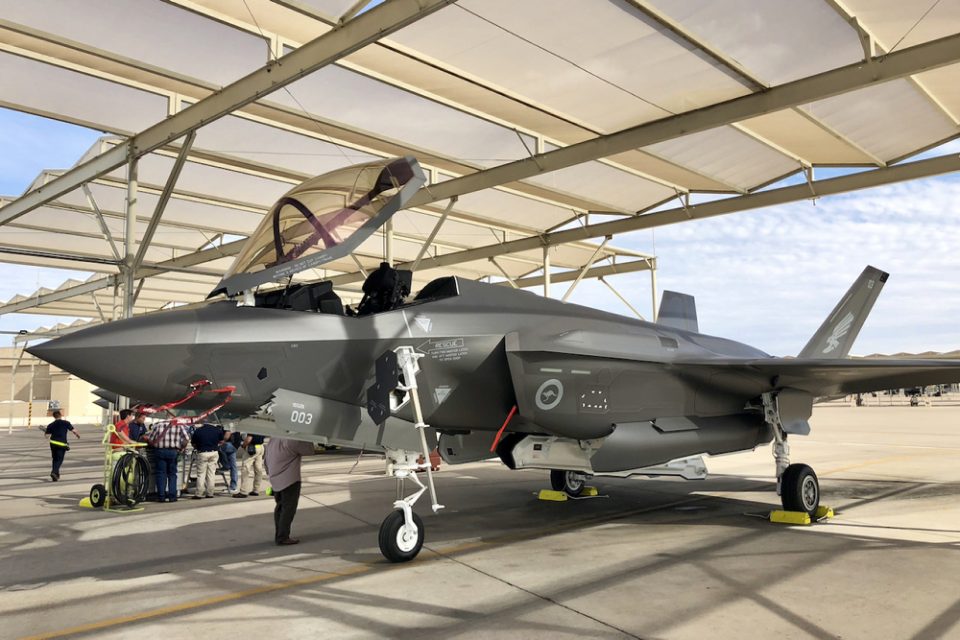Recently, Australia more than doubled its F-35A fleet when Lockheed Martin delivered three F-35As (AU3, AU4 and AU5) to the Royal Australian Air Force team stationed at Luke Air Force Base, Arizona, USA.
These are Australia’s first Block 3F Lightning II ‘Mission Ready’ jets which are being used to train USAF and RAAF pilots and maintenance crews.
The first F-35As will arrive in Australia in December 2018 to ensure continuity in Australia’s air combat capability during the drawdown of the F/A-18A/B Hornet fleet that the F-35A is replacing.
April 10, 2018
Australian Department of Defence
In a recent interview conducted at RAAF base Williamtown, the Commander of Air Combat Group, Air Commodore Kitcher highlighted the strategic goal of ACG with regard to the transition as follows:
“Our challenge is to actually transition to the new capabilities in minimum time whilst ensuring we keep the overall force healthy.”
They have an aggressive schedule with regard to F-35A transition.
They are transitioning from four Hornet to four F-35A squadrons in just four years.
“That is a more rapid change, and a more aggressive schedule than any other F-35 user is on track to do…..”
And he discussed as well the nature of the aircraft and its impact on missions:
What can be overlooked with regard to the F-35 is that it is many ways part of the transition to distributed C2 rather than being viewed as a classic ISR capability, whose function is to distribute data widely in the battlespace.
Given the challenge of operating in a contested environment, within which adversary’s will seek to disrupt the ISR flows which the US and the allies have been able to generate within previous land centric wars, a key challenge will be to take decisions in a contested environment.
As Air Commodore Kitcher said: “With the fifth generation aircraft, there are key missions they need to perform themselves and just do it, potentially without proliferating information support to the broader force.
“Everyone’s going, “But I need the information that can come off the aircraft.
“We need to be able to say no you don’t, in this particular case, you don’t need that information right now, you may get it later.”
“It is about sorting out and collectively agreeing, from the tactical squadron to the higher HQ’s, what we should choose to do versus what we can do,” Air Commodore Kitcher said.


